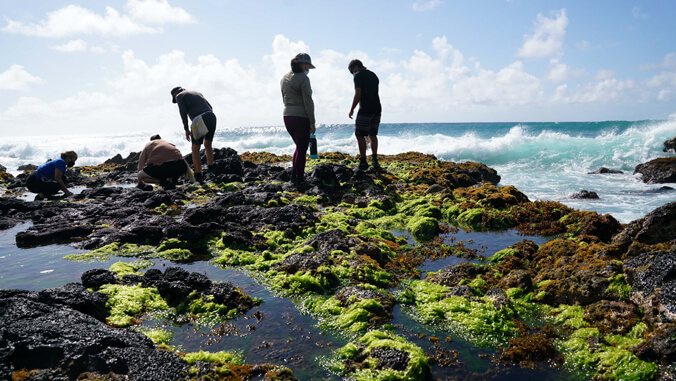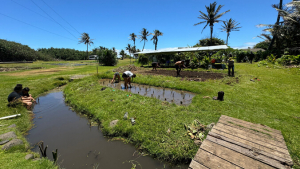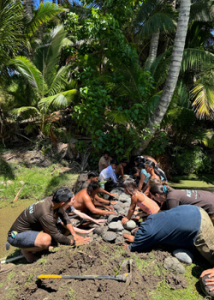
The University of Hawaiʻi Sea Grant College Program (Hawaiʻi Sea Grant) is leading a diverse group of organizations that has been awarded $68.5 million to build a more resilient future for Hawaiʻi.
The project, ʻĀina restoration through community governance to advance climate resilience in the Hawaiian Islands, will build long-term climate resilience by restoring forest, watershed, coastal and marine ecosystems and through improved co-management and community governance of resources.

“We are honored to have been entrusted with this award and opportunities for transformative work across the pae ʻāina,” said Darren T. Lerner, Hawaiʻi Sea Grant director and project lead. “We will work together with two co-leads, Kuaʻāina Ulu ʻAuamo and the State of Hawaiʻi Department of Land and Natural Resources, along with many other partners and communities, to build an enduring program and long-term partnerships in support of vital community governance and ʻāina stewardship for long beyond the five-year project.”
The collaborative of twelve partners spans local and national non-profit organizations, collectives of Indigenous and local stewards, state and county government agencies, and academia.
The funding from the Department of Commerce and National Oceanic and Atmospheric Administration (NOAA) is through the Climate Resilience Regional Challenge, a historic $575 million investment from the Biden-Harris Administration’s Inflation Reduction Act. It is one of only eight awards across the nation and the only one led by a university.
Integrating Native Hawaiian stewardship

The award builds on the knowledge and practices of the moku system, a Hawaiian land tenure and resource stewardship system refined over generations. The moku system divides islands into large tracts of land containing forested landscapes, cultural resources and seascapes to maintain long-term abundance.
Project activities will focus on five moku selected because of their high potential to promote Native Hawaiian stewardship practices and revitalize the moku system in areas that have been underserved by climate adaptation investments: Kona, Kauaʻi; Waiʻanae, Oʻahu; Kona, Molokaʻi; Pūʻali Komohana, Maui and Kohala, Hawaiʻi.
“Reducing risks and advancing climate resilience often means focusing on community-based governance and stewardship,” said NOAA Administrator Rick Spinrad. “This funding will help build a more resilient future for the Hawaiian Islands through planning, protection, and restoration actions.”
In addition to making significant place-based investment in ʻāina restoration and conservation projects, the project will invest in community-centered governance, network building, knowledge exchange and capacity building in the five moku while connecting ongoing work across Hawaiʻi. Eighty percent of the $68.5 million will go beyond the university to directly support community partners and collaborators.
Project partners
- University of Hawaiʻi Sea Grant College Program (Project Lead)
- Hawaiʻi Department of Land and Natural Resources (co-lead)
- Kuaʻāina Ulu ʻAuamo (co-lead)
- Conservation International Hawaiʻi
- County of Maui
- Department of Hawaiian Home Lands
- Hawaiʻi Conservation Alliance Foundation
- Hawaiʻi Office of Planning and Sustainable Development
- Kaʻala Farm Inc.
- Kupu ʻĀina Corps
- Mālama Learning Center
- The Nature Conservancy
Moving forward, the project team will be working to expand the list of partners to include additional community organizations in the five moku, with the goal of long-term partnerships that will support vital community governance and ʻāina stewardship.
Read more at the
–By Cindy Knapman

